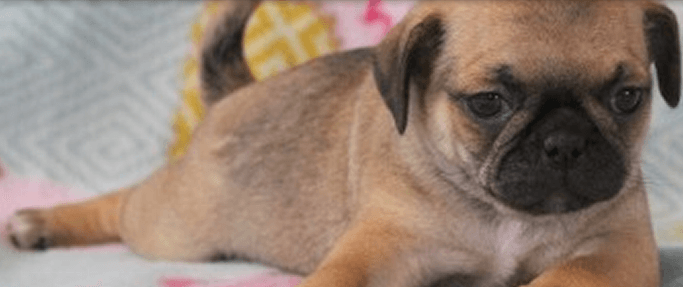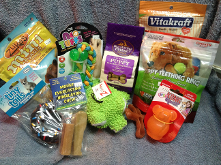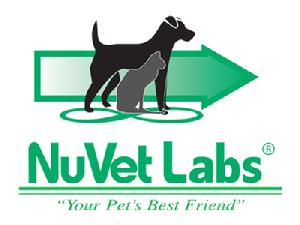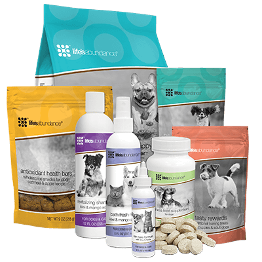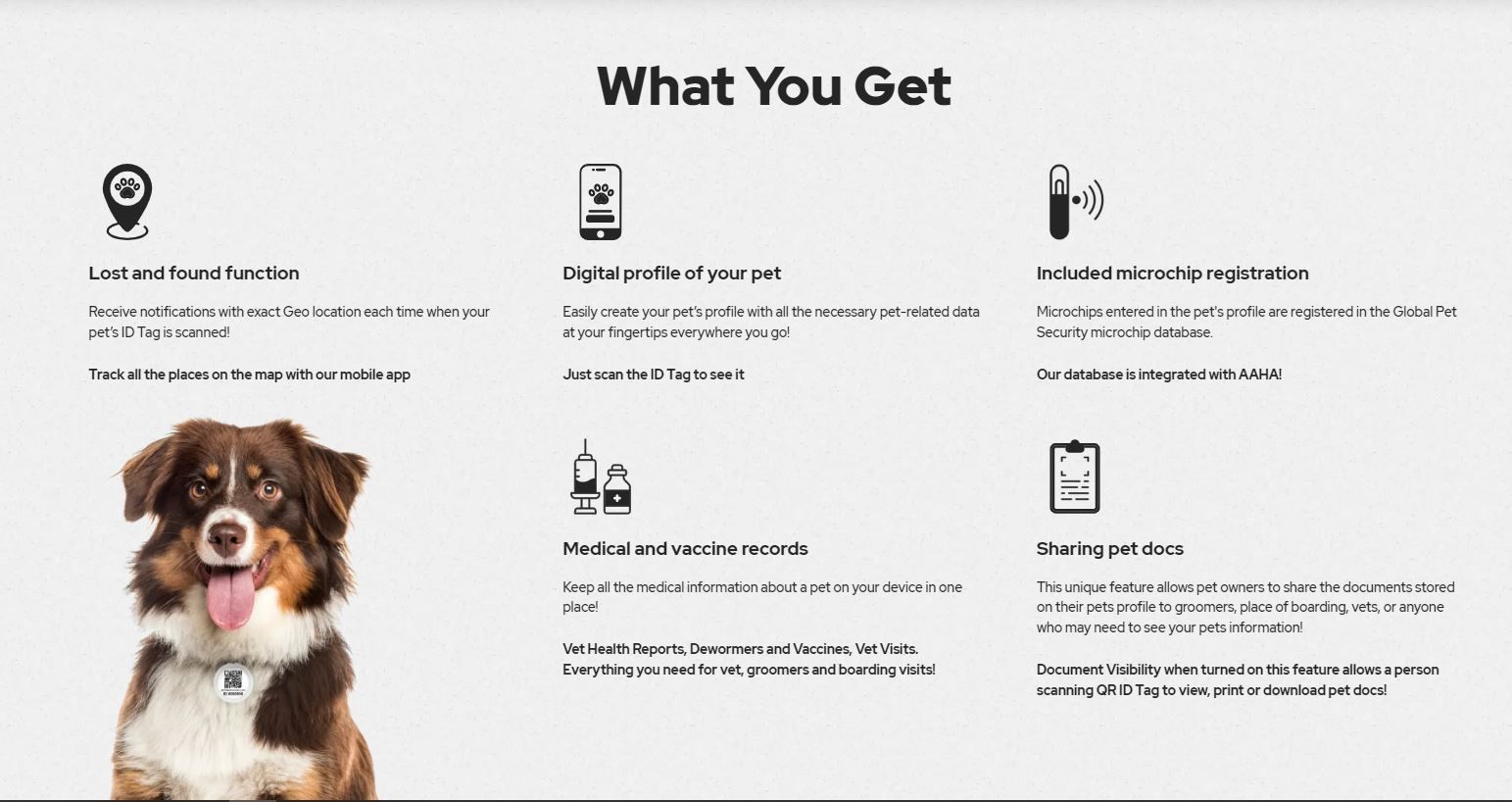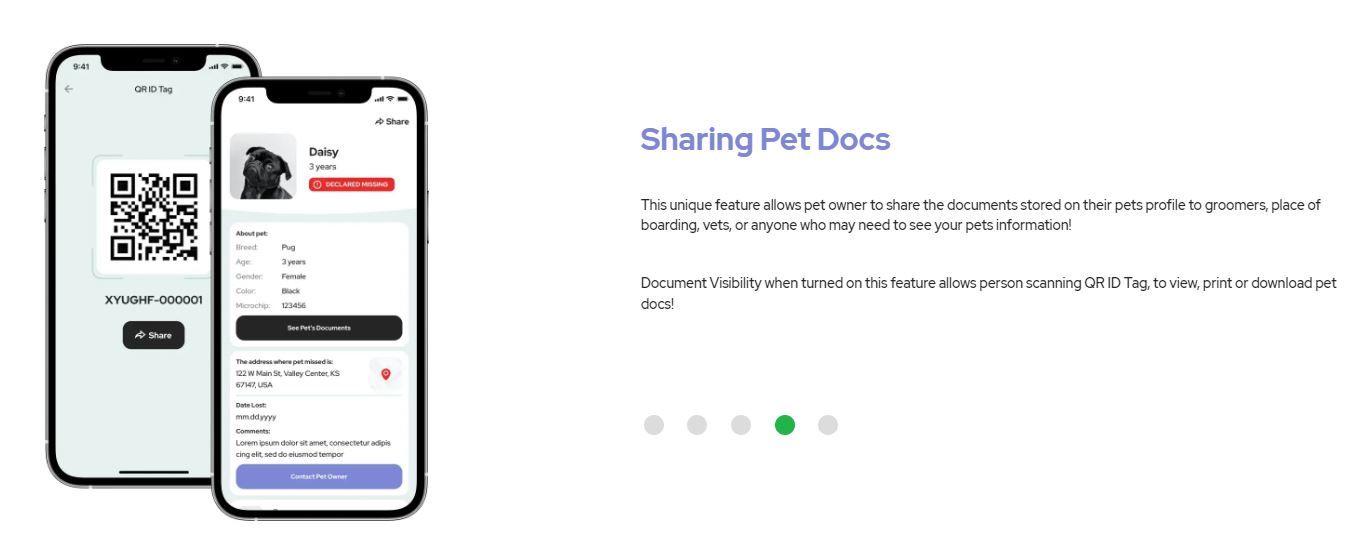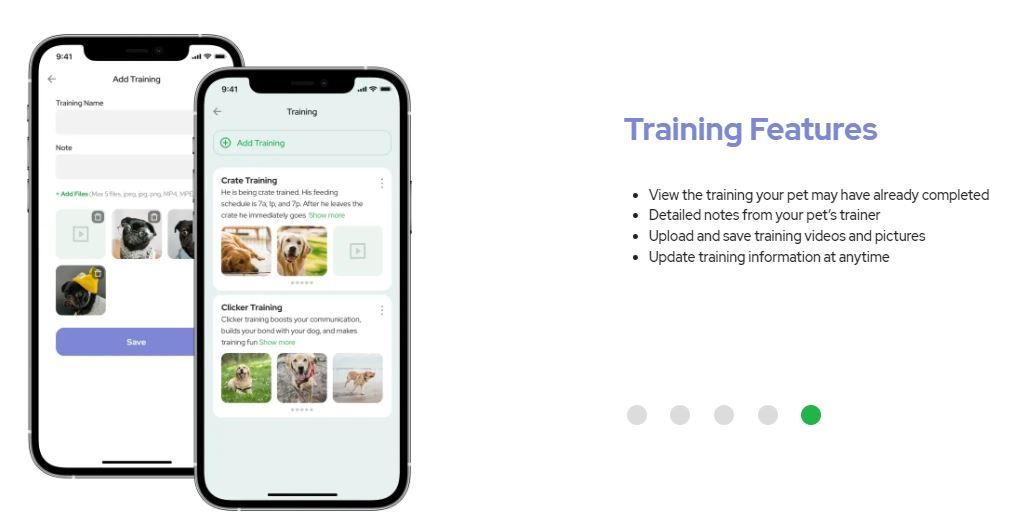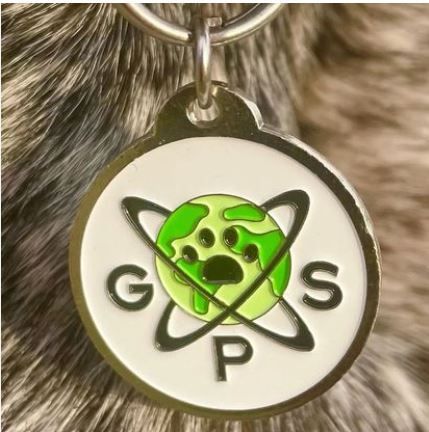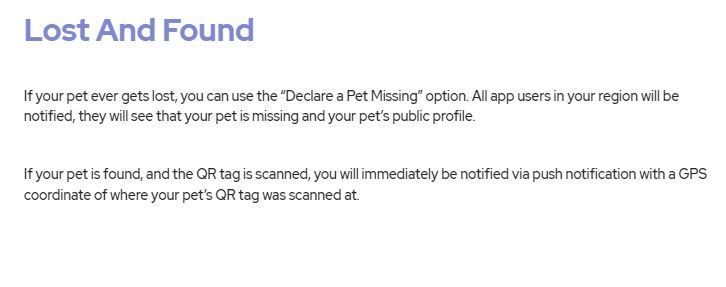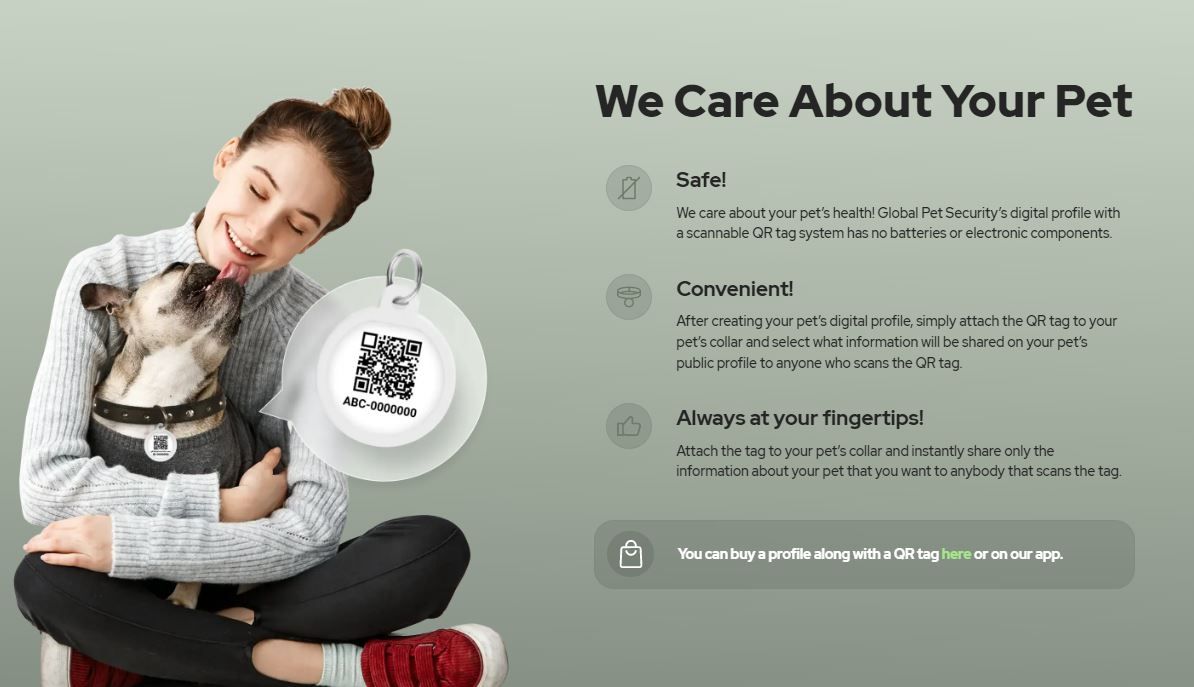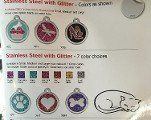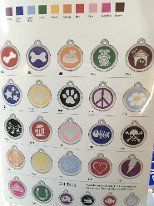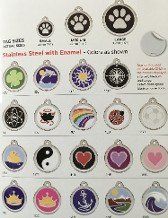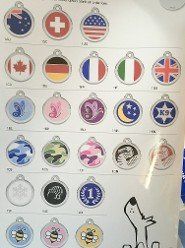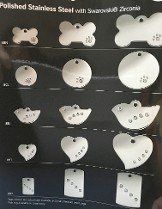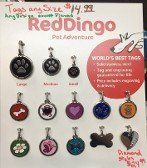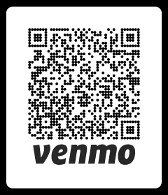Step-by-Step for Your New Puppy
Things to Know & Expect
Pictures on website of your new baby will be updated every other sunday. we would do more but we strive to spend time with the puppies and our children playing , socializing and more. Trust me you will be happier with us playing and getting your puppy social rather than a bunch of photo shoots or videos. Emails Please check your spam often we will send emails some just informative others important invoices, and microchip info about your puppy.
Want to contact as Direct to us as Possible: Click on our Linktree you can get sms updates for routes and easy ways to pay for pick up and deliverys , pets, supplies and more.
Here's Things to do to Be Ready
(Read all the way to the bottom of the page) and Everything you will need to bring puppy home. We Offer Starter Puppy packs for just the Toys and Chewing or Deluxe Kits. Everything you will need for when puppy comes home. All kits are tailor made for your puppy we see what they like here as toys, food etc. and pack up a whole new set of same items just for your new baby.
Here are the links to all the items you could need for your new puppy! Be Prepared and ready so you can spend all your time with your new baby not finding what you need last minute. Click and be sure to have your list :) Click button Below
Be Sure to Have Your New Baby's Food, Treats & Vitamins All Ordered & Ready for Their Arrival
We have had many ask us what Food we use we have few types but Always use Non-BY product and always USA Made the top choice we find to have the best healthiest pup is Life's Abundance for Dog Food they love it and makes an amazing difference in all around health. Links below is how to have them come straight to your door! With these products we believe in Quality food and Vitamins so much that we do extend our pups Health Guarantee with the use of these products!
As a dog breeder, animal health is my top priority. That’s why I enthusiastically recommend NuVet Plus immune system builder to all my customers. Simply put, it is the best nutritional supplement available today. To assure your puppy gets off to the right start, they have been enjoying NuVet Plus every day as a treat (they love the taste). Continuing this daily regimen is the easiest and best way to keep your pet on the path to perfect health!
For NuVet, click and order the wafers and in the amount you like For a discount for "auto ship."
ID Code: 67495
We provide our dogs with a unique blend of these foods (Life's Abundance & Royal Canin) to allow our customers to both, have options for the foods they want to purchase and sometimes puppies may like a kibble shape or taste better for one over the other. We offer free fed style, a mix of the two puppy types.

Congratulations on choosing your new companion and thank you for trusting me to help you find your newest family member.
I recommend that you remain with Royal Canin or our blend, since that is what I fed your pet since weaning. Royal Canin offers tailored nutrition that meets your pet’s breed, age, development and lifestyle. I trust Royal Canin and am confident it provides the proper nutritional foundation for your new family member. To make it easy to stay consistent with feeding, I’m providing you a welcome offer to receive 20% off your first order. Just use code NEWPET20 when you purchase food at shop.royalcanin.com.
Use the links below to get your new puppy started right and have them at home and ready by the time you get your new baby. For food & treats, Click the Life's Abundance link, choose the products page then dog food page or dog treats page then click small and medium breed puppy food. They carry several of the treats your pup will be used to bully sticks, grain-free Chewies. For training we use the freeze dried turkey heart and Tasty Rewards. Thanks for giving your pup the best start in their new home!
We always Microchip our pups with AKC reunite world readable chips. Once you recieve your pups you will be able to register them to you and put in your information. at www.akcreunite.org Microchips are great if used..If your dog gets out or stolen and you dont have it registred it will not help. We also offer in Addition a GPS Tag. These tags are amazing your pet with have all their vet records the shots and wormings with all theri birth date and other info., and Global Pet Systems Gives your pet their own email to send their files and recieve from your vet, groomer or bording kennel. and their entire info at your fingertips. Best part if your pet gets out and someone scans the tag you will get an instant alert to where you pet was just scanned , Like low jack for your pet lol.. Microchips work well but keep in mind only ones who can read it is shelters or vets, the average person who may find your pet doesnt carry a scanner this way no matter who finds them people can use their cell phone to scan the tag and get your phone number to call you and say "Hey i just found your beloved pet! " We offer this through us for our pups only for $80.00 additional charge and will be loaded and ready when your pet is ready to go home. You can purchase yourself later the programs does run $175 to $200.00 on your own. Just let us know before you get your puppy that you want this option. We strive for a better,safer life for your loved ones!
Slide title
Write your caption hereButtonSlide title
Write your caption hereButtonSlide title
Write your caption hereButtonSlide title
Write your caption hereButtonSlide title
Write your caption hereButtonSlide title
Write your caption hereButtonSlide title
Write your caption hereButtonSlide title
Write your caption hereButtonSlide title
Write your caption hereButtonSlide title
Write your caption hereButton
New Puppy Arrival Procedures
- Please Remember your new addition is a Baby, and should be treated just as if a new baby comes home from the hospital.
- Take puppy straight home from airport or pick up Location
Keep visitors away for a few days this is Not the time to show your new pup to everyone its way to stressful. - Let your puppy have a small area with crate , bed and shallow water and food dish, Think about how deep a dish is may be hard to get a drink from, No they should Not have run of the House or Yard that is way too much to fast.
- Hold and love your pup with a calm voice kids should not be running screaming etc.
- Give your new pup a small amount of Plain or Vanilla Yogurt it will help soothe their tummy.
- Make sure the first night to note how much they are eating and drinking a good indication is they will pee and poop.
- Look at the poop sometimes it can be loose from stress, but they shouldn’t strain or be slimy If poop doesn’t look right or pup not eating take to vet and they may just need some anti stress or mild antibiotics if the travel upset them a bit.
- You can take a poop sample with you,
DO NOT just agree if vet says has Parvo, a Fecal Parvo test WILL be positive because your puppy had a booster vaccine 15 days or less since travel. Parvo means the pup is limp, throwing up all the time and cant keep food down. If your pup is not doing any of this They
DON’T have parvo. Make sure you have a breeder friendly vet, some hear breeder and want to charge you for tons of tests. Remember we have lots of tests done on this end and all that most likely not necessary. Stress will make a puppy shake and sometime vomit after a car ride to vet. But most of the stress would have stopped with the first cuddle of your pup, unless you had several people holding the pup talking etc.
- If you treat your new puppy like you would a new human babies when they come home you will have a Happy Healthy start to their life in your family.
- Remember the place, people are all new quiet, calm, and fairly dark and warm are great ways to slowly adapt your baby. And remember call or email us anytime if you are worried no such thing as bothering us, where your baby's health is concerned.
Jenina & Josh Fortner
Tips to Get Ready for Your New Puppy & After You Have Them
- Get a crate! It makes house training incredibly easy.
- Let your puppy sleep in your bedroom, at least for the first few nights. This whole experience is scary for a pup. Don’t make him sleep in the laundry room. Put the crate next to your bed so you can reassure him.
- Baby gates are your friend. Use them to keep the puppy out of places you don’t want him to destroy.
- Supervise, supervise, supervise. If you cannot watch him like a hawk, he needs to be in his crate or in his “room,” Set up a puppy room for when you can’t supervise. Pick a small area like the bathroom or kitchen, block it off with baby gates. Add a bed in one corner and pee pads or a dog “toilet” in another.
- Pick a potty spot. If you don’t want Sparky pooping all over the yard as an adult, pick one area and take him directly there when it’s potty time.
- Set a daily routine. House training proceeds more smoothly if your puppy knows what to expect from her day.
- Don’t believe everything you read on the Internet. Not all advice is good advice. Take everything with a grain of salt. Use the advice that works for your lifestyle remember not every ones household is the same.
- Make sure everyone is on the same page. Discuss the puppy rules with your whole family. Figure out who will do what when. Pick one set of training cues and stick with them.
- Don’t encourage behavior that you’ll regret when he gets big.
Get your pup used to handling from day one, touching feet, nails, tail, ears, mouth, teeth, and belly with love. Start grooming early on. - Let your puppy meet at least two new (friendly and gentle) people every day.
Take your puppy to the pet store. Great socialization opportunity.
Introduce your pup to all kinds of novel things. People in funny hats. Remote control cars. Kids playing. Agility equipment. Balloons. Cats. Car rides.
Socialize, don’t traumatize. Introduce new experiences slowly and never let your puppy get overwhelmed. - Reward good behavior, don’t wait for bad behavior. Reward the puppy when you see him doing something you like. Don’t wait until he’s misbehaving to give him attention.
- Avoid the dog park. In addition to putting your under vaccinated puppy at risk for disease, most dogs at the dog park are quite rude by canine standards. A couple bad experiences could ruin your puppy’s opinion of her own species.
- Focus on what you want, not what you don’t want. For example, teach your puppy to sit when greeting people. Don’t just yell at her for jumping up.
- Watch your puppy’s poops. Disgusting? Yes. But it could save your puppy’s life. If you notice anything like diarrhea or blood, take your puppy for a vet visit ASAP.
- Rotate through the toys. Let your puppy have two or three toys at a time. Changing up the toy selection will keep Sparky interested.
- If you think your puppy needs to go potty at all, don’t hesitate to take him outside! You’d be surprised how often puppies need to go sometimes.
- Practice separation. As tempting as it is, don’t let Sparky be glued to your side all day. Letting your puppy have time to himself in his crate or room will help prevent separation anxiety.
Hellos and Goodbyes should be no big deal. Don’t make a fuss over your pup when you leave or come home. Again, prevents separation anxiety. - Don’t get offended when your puppy chews on you. Puppies bite. Sometimes painfully. It is NOT aggression. Do not react by yelling, smacking him, rolling him on his back or holding his muzzle shut.
- Don’t use ammonia-based cleaners. Your puppy will think it smells like urine and it will actually encourage her to pee there again. Use an enzymatic cleaner like Nature’s Miracle.
- Visit the vet. Take your pup for a visit when she doesn’t have an appointment. Bring some treats and ask the office staff to give her some. Make the vet’s office a fun place! (call ahead first to make sure this is OK)
- As a general rule of thumb, the number of hours a puppy can “hold it” is his age in months plus two. So a two month old puppy should be crated for a maximum of four hours at a time (during the day. When they sleep at night, puppies can usually hold it for longer).
- Be prepared for your pup to become an obnoxious little brat around age 6-10 months. Adolescence is even more challenging than puppy hood. First and foremost have fun with your dog!
Along with Daily socialization we do to help your puppy become Happy and Social is also Potty training from the start...
Birth to 4 weeks - with mom in the mommy area she will clean and care form their potty needs. But every mom we also have a Puppy litter box with puppy pellets not only for mom who has to drink a lot to nurse her babies but to help make sure the new pup see the box and the litter smell
Day 3 : Early Neurological Stimulation In addition, some breeders include the Early Neurological Stimulation (ENS) exercises, which are conducted once daily from the third to the 16th days, a period believed to be a time of rapid neurological growth and development. Even though puppies are very immature during this time frame, they are sensitive and respond to ENS.The US Military developed this method designed to improve the performance of future military working dogs, according to the Breeding Better Dogs program developed by Dr. Carmen Battaglia, esteemed breeder, judge, seminar presenter, and AKC board member.
ENS requires handling the puppies one at a time while performing a series of five exercises.
4 to 5 weeks- We introduce Wee Wee pads great to help them understand what they can piddle and poo on and how to keep it in a certain area
5 to 6 Weeks-- By this time wee pads become a toy lol.. so then they are placed into our puppy play pen which has an extra wide litter box in which mom & us show them where to go and again keep it in one area away from their sleeping kennel and off the floor
6 to 7 weeks- in this playpen they are then let out to the potty outside area
with mommy only supervised (have to watch for Hawks, Owls and wildlife)
This way they can learn the sights and sounds outside and our potty yard has concrete, grass, mulch, pebbles in four sections so when you take you puppy home they are okay walking onto any type of ground.
7 to 8 weeks-- During this time they have access to the litterbox during the evening and during the day they go through a dog door to go potty outside and they are crated during the night to get used a crate for training. If you take home your puppy and put down newspaper or wee wee pads you are basiclly reverting their training ans will have to start again.
All new dog parents want to teach their new puppy not to mess inside their new home. The best way to achieve this goal is by establishing a timeline to follow, and sticking to it, and dog crates are very useful training tools to assist you in establishing your potty training plan.
When You Wake Up get your puppy out of the crate and outside to do their business. Don’t stop to make coffee, check emails, or brush your teeth.
Keep the crate near your door to the outside where they will go potty. This will prevent them from stopping and peeing on the floor on the way to the door.
Always head out the same door to the same area where you want your puppy to potty, and keep them on a leash outside while training (even in a fenced yard), so you can see what’s happening and react immediately.so you can praise, praise, praise when they do somthing, remember stay only out for 10 minutes tops, if they do nothing bring back into crate for a few minutes and try again. Don't bring them in let them run around they WILL potty in the house. They must establish where to potty first. After Meals let them out again about 15minutes after you see them eat
Most puppies graze three to four times a day when they are growing, and most puppies will have to poop after eating, so paying attention to this short follow-up period is important.
Also, remain watchful when the puppy drinks water. Treat this just like a meal, and take them out to potty soon afterward.
There are many other times that a young puppy will need to go potty, include periods after naps and playtime.
Naps are mini-versions of the morning routine. Make sure that whenever your puppy is sleeping, you take them outside the moment they wake up.
Some seemingly random clues that a puppy needs to go out can include sniffing the floor or carpet, wandering away from the family, becoming overexcited with zoomies, whimpering, or running to the door. If you see any of these signs, take your puppy out to potty immediately.
Praise for Potty Training Success
As you establish the routine of taking your puppy out after sleeping, eating, and playing, you also must focus on what to do once you are outside.
Find a spot that will become the “potty spot,” and always take your dog to the same spot. Stand quietly and wait until they are ready, and as they commence, give a voice command or signal to “go potty” or “do your business.” Then wait for the results, and praise lavishly if your puppy goes. Say “good boy/girl!” then give the pup a yummy treat.
Do this every time you are outside (or indoors if using dog litter boxes), and soon enough, the puppy will understand that doing their business in the proper spot will bring lots of love and treats. Also, after they eliminate outside, play with your pup for a few minutes before rushing back inside.
If your pup doesn’t go when you’re outside, you may have to take them inside and come back out again in a few minutes. Even they do go, they may need to head back out very soon, so stay vigilant. DO Not let them run the house if they have not elimated yet.
Many owners have great results by also placing a bell on the door handle, and training their puppy to ring the bell when they need to go out. Start by ringing the bell as you exit with your dog, and praise the puppy as soon as they learn to ring the bell on their own. ( We carry Potty Bells in the shop as well they will use them - we have them on our doors for our adults as well as doggy doors)
When you have to leave home for several hours and your puppy needs to stay in a crate during the day, remember to plan ahead. If you’re unsure about how long your puppy can hold it, use the month-plus-one rule. Take the age of your puppy in months and add one, and that is the maximum number of hours that your puppy should be able to comfortably hold it between potty breaks. A 3-month-old puppy plus one equals 4 hours that they should be able to stay in the crate without a mess.
Remember that the last thing you should do before you go to bed for the night is to take your puppy out for one last potty break before bedtime. However, your pup will usually be able to hold their bladder for a longer period when they are asleep and not active.
Steps to a Great Puppy
Many ask how do we socialize and create such loving and stable pups. Here are just some of the things we do and you can too once puppy goes home.
The 7 Stages of Puppy Development
In order to understand why a properly raised puppy is so important, you need to understand each stage of development a puppy goes through as it matures. Let’s take a look at the different stages, but before we do, keep in mind that these stages are generalizations – each dog will progress at its own pace.
Stage 1: The Transitional Stage
2-3 Weeks
The Transitional stage generally lasts from age two to three weeks, and it’s during this time that your puppy’s eyes will open, and he’ll slowly start to respond to light and movement and sounds around him. He’ll become a little more mobile during this period, trying to get his feet underneath him and crawling around in the box (or wherever home is.) He’ll start to recognize mom and his littermates, and any objects you might place in the box.
This is where we touch them daily, talk to them place toys in whelping area, this helps create a puppy who will know how to play with toys.
Stage 4: The “I’m Afraid of Everything” Stage
2-3 Weeks
This is Where you Bring home puppy and you are now he or she's person they look to you for learning and how to become a great dog as well.
8 Weeks to 3 Months
The “I’m Afraid of Everything” Stage lasts from about 8 weeks to 3 months, and is characterized by rapid learning as well as a “fearful period” that usually pops up at around
8 to 10 weeks. Not all dogs experience this, but most do, and they’ll appear terrified over things that they took in stride before. This is not a good time to engage in harsh discipline (not that you ever should anyway!), loud voices or traumatic events. At this time your puppy’s bladder and bowels are starting to come under much better control, and he’s capable of sleeping through the night. (At last, you can get some rest!) You can begin teaching simple commands like: come, sit, stay, down, etc. Leash training can begin. It’s important
not to isolate your puppy from human contact at this time, as he’ll continue to learn behaviors and manners that will affect him in later years.
Stage 6: The Brat Stage
4-6 Months
The Brat Stage starts at about 4 months and runs until about 6 months, and it’s during this time your puppy will demonstrate even more independence and willfulness. You may see a decline in his urge to please you – expect to see more “testing the limits” type of behaviors.
He’ll be going through a teething cycle during this time, and will also be looking for things to chew on to relieve the pain and pressure. Frozen doggie bones can help sooth him during this period.
He may try to assert his new “dominance” over other family members, especially children. Continue his training in obedience and basic commands, but make sure to never let him off his leash during this time unless you’re in a confined area. Many times pups at this age will ignore commands to return or come to their owners, which can be a dangerous, even fatal, breakdown in your dog’s response to you. If you turn him loose in a public place, and he bolts, the chances of injury or even death can result – so don’t take the chance.
He’ll now begin to go through the hormonal changes brought about by his growing sexual maturity, and you may see signs of rebelliousness. (Think adolescent teen-age boy!) If you haven’t already, you should have him neutered during this time. (Or spayed if you have a female.)
Stage 2: The Almost Ready To Meet The World Stage
3-4 Weeks
The Almost ready to meet the world stage lasts from 3 to about 4 weeks, and your puppy undergoes rapid sensory development during this time. Fully alert to his environment, he’ll begin to recognize you and other family members. It’s best to avoid loud noises or sudden changes during this period – negative events can have a serious impact on his personality and development right now. Puppies learn how to be a dog during this time, so it’s essential that they stay with mom and littermates.
This is the time we encourage playing with them and hearing the normal sounds of our home so they don't find these sounds scary when older such as vacuums, TV, kids playing etc.
Stage 5: The Juvenile Stage
3 Months to 4 Months
The Juvenile stage typically lasts from 3 to 4 months of age, and it’s during this time your puppy is most like a toddler. He’ll be a little more independent - he might start ignoring the commands he’s only recently learned – just like a child does when they’re trying to exert their new-found independence. As in “I don’t have to listen to you!” Firm and gentle reinforcement of commands and training is what’s required here.
He might start biting you – play biting or even a real attempt to challenge your authority. A sharp “No!” or “No bite!” command, followed by several minutes of ignoring him, should take care of this problem.
Continue to play with him and handle him on a daily basis, but don’t play games like tug of war or wrestling with him. He may perceive tug of war as a game of dominance – especially if he wins. And wrestling is another game that can rapidly get out of hand. As your puppy’s strength grows, he’s going to want to play-fight to see who’s stronger – even if you win, the message your puppy receives is that it’s ok to fight with you. And that’s not ok!
Stage 3: The Overlap Stage
4-7 Weeks
From 3-4 weeks your puppy begins the most critical social development period of his life – he learns social interaction with his littermates, learns how to play and learns bite inhibition.
He’ll also learn discipline at this point – Mom will begin weaning the pups around this time, and will start teaching them basic manners, including accepting her as the leader of the pack. You can begin to introduce food to the pups starting around the 4th week – transition gradually as Mom weans them.
Continue handling the pups daily, but don’t separate them from either Mom or litter mates for more than about 10 minutes per day. Puppies that are removed from the nest too early frequently are nervous, more prone to barking and biting and have a more difficult time with socialization and training. Puppies need to be left with Mom and siblings until at least 7 weeks of age - and preferably a little longer - for optimum social development.
Experts say that the best time in a puppy’s life to learn social skills is between 3 and 10 weeks of age – that’s the window of opportunity you have to make sure your puppy grows up to be a well-adjusted dog. It’s extremely important to leave your puppy with Mom and his littermates until at least 8 weeks of age. Don’t discipline for play fighting, housebreaking mistakes or mouthing – that’s all normal behavior for a puppy at this stage.
Stage 7: The Young Adult Stage
6-18 Months
The Young Adulthood stage lasts from 6 months to about 18 months, and is usually a great time in your dog’s life - he’s young, he’s exuberant, he’s full of beans – and yet he’s learning all the things he needs to become a full-fledged adult dog.
Be realistic in your expectations of your dog at this time – just because he’s approaching his full growth and may look like an adult, he’s not as seasoned and experienced as you might expect. Gradually increase the scope of activities for your dog, as well as the training. You can start more advanced training during this period, such as herding or agility training, if that’s something both of you are interested in. Otherwise, extend his activities to include more people and other animals – allow him to interact with non-threatening or non-aggressive dogs.
Congratulations! You’ve raised your puppy through the 7 stages of childhood, er, I mean puppyhood, and now you have a grown-up, adult dog! Almost feels like you’ve raised a kid, doesn’t it?
Don't Forget Your Puppy's ID Tag
We can order what you want Engraved (Lifetime Engraving Guaranteed)
It can be sent here for pick up or directly to you for your new puppy. Just pick you design, size and i will get what you want on tag that's it!
$14.99 for any except Diamond tags
$24.99 for Diamond tags
Email, Call or Text
Jenina (Pugs) or Shelby (Pugs) or Troy (Chihuahuas) Jammie(Pugs)
jnjpugsks@gmail.com AnSPugs@gmail.com TroysChis@gmail.com
Jaewittypugs@gmail.com
We do have financing options Apply with Easy pay *Must be a local pick up only, or a breeder Delivery . Other Financing avialable is Paypal Credit
- Affordable financing options for customers with good to no credit. - Financing options for Hedgehogs with up to $5,000 and $0 down payment at the time of purchase.
We do have financing options Apply with Easy pay *Must be a local pick up only, or a breeder Delivery . Other Financing avialable is Paypal Credit
- Affordable financing options for customers with good to no credit. - Financing options for Hedgehogs with up to $5,000 and $0 down payment at the time of purchase.
Payment Information
We are very strict about our customers' financial security and we remain PCI compliant and use PayPal for best Secure payments. Please do not call us to give us your credit card as we do not take card numbers over the phone. You can send a personal check if for a deposit on a pet or Use the pay pal.me address below or just simply click the "Buy Now" button next to the pet and you can choose PayPal Credit or right from your Checking or Credit Card or Pay pal account. Thanks so much.
If you wish to place your payment through Venmo or Cash App that's accepted as well. Please be sure to add note as to what pet you’re are sending it for and your phone number. Thanks Here's the link to my Venmo.
Email, Call or Text
Jenina (Pugs) or Shelby (Pugs) or Troy (Chihuahuas) Jammie(Pugs)
jnjpugsks@gmail.com AnSPugs@gmail.com TroysChis@gmail.com
Jaewittypugs@gmail.com
Address: Abilene, KS 67410




Shared For Paws-N-Claws: We do Help take in unwanted small animals if we have the Quarantine space . Pet shops are the number one place that people"dump" their unwanted small critters. Many pet shops try to work with rescues ,the rescues we have found wont work with us because we are a pet shop ..lol We have always maintained the highest standards in finding homes for dumped critters, we get them healthy and never resell any such animals. We work strictly by donation for these pets. If you are ever instrested in a rescued critter send in the applicattion and state that in the notes. If you would like to be a generous person and Donate to our cause the link below will help us out wonderfully.
